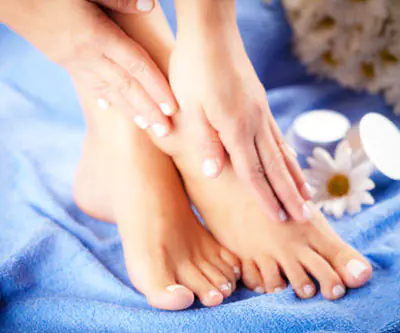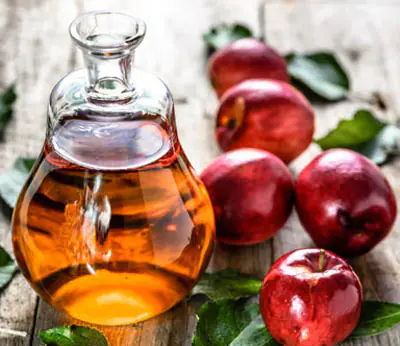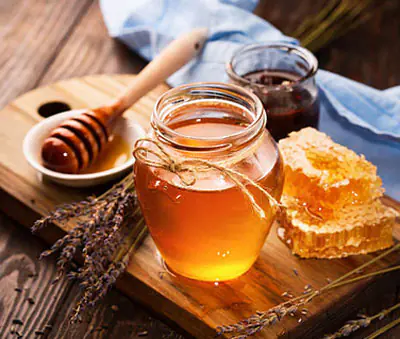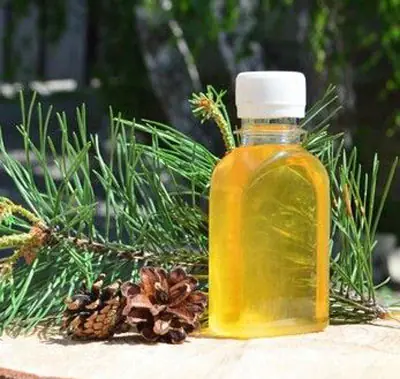Sometimes the skin around the nails becomes rough, dry, and then peels off. It looks sloppy and brings internal discomfort due to its unkempt appearance. Rough skin around fingernails often begins to appear in winter. Why does this happen and what can be done to get rid of this phenomenon?
Why does the skin around your nails stop being tender?
The skin around the nail (or, you could say, above it) is called the cuticle. The main structural elements of the nail plate are shown in the photo:
The cuticle is the protection of the base of the nail from bacteria entering the growth zone. The marginal zone of such a protective cover consists of dead cells. Sometimes this area becomes rough.
On both sides of the nail plate there are skin ridges. Their outer skin often also becomes rough due to increased growth and death of skin cells. They can also undergo a drying process, which in turn also leads to the formation of hangnails. By accidentally catching them or trying to tear them off, we always get the same result - the appearance of small wounds. Sometimes this action leads to suppuration.
Wear gloves if you want to keep the skin around your nails from being dry.
The skin around the nails becomes rough due to certain specific professional activities. People involved in physical work, in contact with acids and fuels and lubricants, or engaged in agricultural activities are susceptible to this. Of course, home activity also contributes to this process - working with the soil or long-term typing at the computer, playing the guitar or simply working with papers leads to the appearance of rough skin around the fingers and dryness.
Wearing tight shoes leads to the same process on your feet. When you walk for a long time in uncomfortable shoes, the skin around your toenails also becomes rough and can subsequently dry out and crack.
When skin thickenings occur around the nail plate, most people take up manicure scissors and cut them off. But this does not take into account human physiology.
The skin, after its forced cutting, begins to grow more intensively, thereby replenishing the lost cells.
The same process occurs in the case of the appearance of rough and thick cuticle. The more often you cut it, the faster it grows.
A common cause of rough skin is improper processing during both manicure and pedicure. A complete lack of care for the nail plates and the skin around them leads to a similar result.
Rough, dry skin around the fingernails can also appear for other reasons:
- the body's reaction to the effects of chemicals or low-quality perfumes;
- allergic manifestations manifested in the form of dryness;
- lack of vitamins and minerals;
- nervous stress;
- hereditary factor;
- exposure to low temperatures or dry air;
- frequent contact with chlorinated water.
Treatment for dry and rough skin
For treatment, a nourishing cream containing hyaluronic acid, which is involved in the process of tissue regeneration, is applied daily to the cuticle and side ridges. To moisturize these areas, products containing glycerin are used.
Once a week, it is recommended to apply a scrub to the nail area to help get rid of dry, dead, rough tissue. After the procedure, the substance is washed off, and a nourishing gel or cream is applied to the treated area; it is possible to use a special cuticle oil.
Also, if the skin around the nails is dry, then to soften it you need to use nourishing baths in the evenings.
Baths
Bath for softening the skin in the photo.
One of the best bath products for peeling skin on the fingers is starch. A tablespoon of the product is diluted in a liter of hot water. Perform for 15 minutes.
It is possible to use crushed potatoes. For the bath, mix it with two glasses of hot water and a glass of milk. Hold your fingers for up to 20 minutes. At the end of the procedure, wipe dry and rub in nourishing cream. After performing such baths, the beauty of your fingers and the health of your skin will be restored quickly.
Proper care
It is recommended to perform a European manicure, in which the cuticle is not removed, but is pushed to the base, as shown in the photo:
The same action should be done when performing a pedicure. Of course, this is impossible to do with rough skin. It still needs to be removed.
In order to perform such care correctly, you need to use ceramic files, which are used to finely polish the rough tissue around the nail plate, and not to roughly remove them. Before performing this procedure, it is necessary to soften the skin around the fingernails using medicinal baths.
You need to wash your hands with soap, which contains a moisturizing cream, and start the procedure with warm water and rinse with cold water. This helps improve blood supply and trains blood vessels.
It is necessary to wear gloves when performing work involving household chemicals or contact with the ground.
Medicines: ointments, tablets
If the skin around the nail is peeling, it is necessary to use, especially at night, softening, restoring and moisturizing creams. At the same time, they are applied to the areas of the side rollers and cuticles, massaging these areas. This causes stimulation of the sebaceous glands.
If there is no result, if the peeling does not go away and the skin under the nails peels off, you should consult a doctor to get tested and diagnose the cause.
In this case, treatment is performed using ointments and tablets.
If the skin not only peels off at the ends of the fingers, but also cracks appear, Radevit ointment is used to enhance the skin's protective function. It contains vitamin A, fatty acids, sunflower and vaseline oil, glycerin. Actovegin can be used as an injection for wound healing.
There are also special cosmetics for the skin above the nails, as in this video:
Nutrition, vitamins
In case of vitamin deficiency in the body, the diet must be changed, perhaps radically. It is required to include a variety of plant-based products in the menu:
- carrots, tomatoes, greens, peas, as well as pumpkin and apricots - they contain a sufficient amount of vitamin A;
- carrots, eggs, cheeses, corn and potatoes contain vitamin E.
However, sometimes nutrition alone is not enough to restore the vitamin balance, and in this case the skin under the nails may begin to peel. In this case, you need to see a doctor. They will be prescribed the necessary medications, including vitamin complexes.
If you have your own products for caring for rough or dry skin near your nails, write about them in the comments!
Female beauty has many components, and the skin on the heels is no exception. Although, to be objective, men should also take care of their skin: men’s health and beauty also largely depend on careful body care, so the topic of rough skin on the heels is relevant for everyone. Perhaps men attach less importance to this, because even in summer they rarely wear open shoes, and even with sandals, most men wear socks. But women want to wear sandals and open shoes, and show the beauty of their legs to others, but this does not always work out: the heels can have a particularly unsightly appearance after winter - the skin dries out, becomes hard and rough.
Rough skin on the heels is a very common phenomenon. But it is easy to get rid of it if you use simple folk recipes for treatment.

Why does the skin on my heels get rough?
So, where does rough skin come from on your heels?
There is nothing particularly surprising here, because we take care of our heels very rarely, and this care is usually expressed in the fact that we rub them with a pumice stone and apply some kind of nourishing cream. And there are also those “thrill-seekers” who use metal graters and even a razor: cutting off the thickened, rough skin, they think that they have gotten rid of it, but that’s not the case - everything turns out the other way around. Not only can you get injured, but also the skin on the “cut” areas begins to grow with a vengeance, and becomes thicker and thicker - this can be done for years.

The cause of rough skin on the heels may be a “standing” lifestyle - for example, for those who work as a salesperson in a store, or as a hairdresser in a salon; uncomfortable shoes - this especially applies to shoes with heels, when body weight is distributed unevenly; in the summer we walk barefoot at the dacha, in the warm dust, believing that walking barefoot is useful - this is true, but after that our feet need special care. Even at home, contact with hard ceramic tiles often causes rough skin on the heels.
The stratum corneum on the heels is intensely formed both in those who love slippers and mules, which are fashionable nowadays - the latter are worn by many women in the summer, considering them comfortable and versatile. However, such shoes constantly “slam” the heels, and the skin on them gradually becomes rougher, and if there is a lack of care, this happens very quickly.
A common cause of rough skin on the heels is excess weight: if a woman is “in body”, and even wears high-heeled shoes, can you imagine what kind of load her heels can withstand during the day?
Possible cause: disturbances in the functioning of internal organs
Rough skin on the heels is not just a cosmetic problem. It happens that certain disturbances occur in the body - for example, in the functioning of the endocrine system, or there are not enough vitamins and minerals - in this case you need to consult a doctor and not self-medicate.
Fungus is also often the cause of roughening and cracking of the skin on the heels - this is a dermatological problem, and treatment must be specific.
If the only problem is that you forgot about taking care of your feet, then everything is simpler, but you will have to make an effort and show patience: one, two or even three procedures will not be enough - you need to care for your heels purposefully and systematically.
Traditional recipes for treating heels
Folk remedies for the treatment of rough skin on the heels and foot care always help to cope with any cosmetic problems: the result depends on the complexity of the problem and on the regularity of the procedures used.

Apple cider vinegar compresses
Apple cider vinegar helps soften and remove rough skin on the heels: before going to bed, wrap gauze soaked in vinegar on the steamed heel, secure the bandage, put a plastic bag and a warm sock on top. The bandage should be removed in the morning and the softened skin should be carefully cleaned with a pumice stone. The procedure is continued until the heels become soft and smooth, and then repeated periodically for prevention - at least once a month.
Hot foot baths with onion skins
Regular onion peels, which we often throw away, can soften the skin of the heels and even heal cracks. Pour boiling water (2 liters) over the husks (one handful), close and place the container in a warm place for an hour. Pour the infusion into a basin, add salt and soda (1 tablespoon each), and dip your feet in the infusion - it should be as hot as you can stand it. When the water has cooled, blot your feet with a soft cloth, lubricate them with any vegetable oil and raw egg yolk, put on soft socks made of natural fabric, and on top of that a plastic bag and warm socks - leave all this on all night. According to reviews, 4-5 such procedures are enough to completely cure rough skin.


You can get rid of rough skin on your heels by applying honey cakes to them - they are usually used to treat “bumps” after injections. The dough is kneaded from regular flour and honey - 2:1, and 2 flat cakes are formed from it. In the evening, they steam their feet, apply cakes to the heels, wrap them with cling film and a bandage, put socks on top, and go to bed. In the morning, the feet are washed and lubricated with cream, and in the evening you can use the same cakes again - the dough can be rolled into balls and put in the refrigerator in a plastic bag. After 6-7 such procedures, the rough skin should come off and the heels should become soft.
Unusual effective recipes
To treat rough skin and cracked heels, a variety of remedies are used, and sometimes ones that you wouldn’t think of right away - although it’s quite simple. Some women heal small cracks with regular hygienic lipstick: simply steam their feet and apply lipstick to the heels at night - the cracks heal quickly.
However, it happens that the skin is roughened, and the cracks are quite deep, and do not heal completely. In this case, you can use another recommendation - lubricate the cracks with resin.
How to remove cedar resin
What is cedar resin and how does it help with rough skin on the heels?

This is an odorous and sticky substance that is secreted by coniferous trees in places where the bark is damaged. Cedar resin has a lot of medicinal properties, and we won’t list them all, but it’s worth knowing that it heals even purulent wounds, stops bleeding, relieves inflammation, destroys pathogenic bacteria and stimulates the restoration of damaged tissue, so that with its help heels heal quickly . The cracks are smeared with resin before going to bed: it immediately relieves pain, and after 2-3 days, if you reduce the load on the legs, the cracks heal completely. True, the resin darkens the skin on the heels, but gradually it washes off and they become pink and soft.
Removing rough skin and restoring softness and “pink attractiveness” to your heels is not so difficult if you don’t forget about regular care, and then you won’t have to hide them in closed shoes or wear socks - you can walk around in sandals as much as you like and remain in a great mood.
Leather shoes, compared to leatherette products, have a large number of positive characteristics, the key of which is quality. However, over time, certain areas of such products begin to cause some discomfort - backs, insoles or other points become hard or rough.
Accordingly, the owner of such shoes has a question: how to soften the leather, preferably at home? There are a large number of methods to soften rough skin.
What kind of discomfort can there be?
In most cases, the shoes will not fit exactly on the foot, so you will have to break them in or wait until the foot adapts to this model. However, high-quality and reliable leather shoes can begin to cause discomfort when they are no longer new.

As a rule, the discomfort is associated with pressure in a certain area - the heel, toe, middle part, foot, and so on. To get rid of such a defect, you should use a variety of methods.
Special Moments
Unfortunately, this opportunity is not always available. If it still does not exist, then it is necessary to use various professional methods.
There are various chemicals available on the market that can soften shoe leather quickly and reliably. In particular, such products include creams and other products.
You can find them in standard hardware stores or contact shoe centers. Many workshops also offer their clients various products that can soften shoes.
It happens that consumers use creams designed for a person’s face or hands to soften their shoes. In principle, tanning uses skin that is somewhat similar to human skin, but the effect of such creams on it will be very weak.
It turns out that the effect of such products on softening shoes will be insufficient.
Softening shoes with glycerin
In principle, glycerin is a universal agent used in various formulations used in the care of leather products.
It is worth noting that glycerin is an alcohol compound in its composition, but it is non-aggressive, which is why it is used in a wide variety of substances. By using glycerin, shoes made of genuine leather can be made soft and quite comfortable.
The effect of glycerin is much stronger compared to the most reliable shoe polishes.
The product is quite easy to use - you just need to apply it to the area of the shoe that has begun to rub your foot, and leave it to soak in for a certain period of time. With the help of glycerin you can get rid of even quite extensive hardenings on the surface of leather shoes.
After some of this substance is absorbed, its excess is removed from the surface of the leather, and the shoes themselves are polished. As a result of such operations, leather shoes become very soft and comfortable to use.
Soften shoes with wax
The most ordinary wax left over from a candle will be a pretty good help for those who are going to make leather shoes softer.
The method of application is very simple - you need to melt the candle stub and apply a certain amount of wax substances to the surface of the difficult area.
When using this method, you should be quite careful - immediately after melting the candle, it is not advisable to apply wax to the skin, as it will be very hot - this can seriously damage the skin.
To soften your shoes, apply wax along with paraffin a couple of minutes after it melts.
After the shoes are waxed, they are left for a few minutes, then the substance is removed and the leather is polished.
Pork lard as a shoe softener
This method is the most environmentally friendly and harmless to both humans and shoes.
All the natural fats contained in lard will not cause harm, but will only bring benefit.
The main thing here is to use unsalted lard.
The application technology is as follows: cut off a small piece, which is then rubbed into the hardened area.
In principle, many people rub lard over the entire surface - this will allow them to avoid polishing their shoes for a long time. Natural animal fat can reliably protect shoes from the negative effects of moisture and temperature changes.
Folk remedies for softening shoes
Many people use castor or linseed oil to soften their shoes. A similar substance is applied to a leather product for several minutes, after which the shoes are polished. Linseed oil is especially useful in this case - it can be applied to the seams, which will make them waterproof.
Often, ordinary boiling water is used to soften shoes. You should simply pour it into your shoes, hold it there for a few seconds and pour it out. Immediately after this, the shoes are put on and worn in until they are completely dry.
You can prepare the ointment at home. To do this, melt the wax in a water bath, then mix it with turpentine and castor oil. This product will give the skin an additional natural shine, make it soft and prevent moisture from penetrating inside.
A fairly reliable way to soften shoes is to use kerosene. To do this, the shoes should be treated with boiling water, after which they are wiped with kerosene and dried thoroughly.
The simplest method for softening shoes is to use Vaseline. This substance is very beneficial for natural leather, so it does not need to be removed after use. Vaseline is thoroughly rubbed into the shoes and left for a couple of hours. After that, it is cleaned with a special cream and polish.
Some people use a vinegar solution to soften their shoes. The essence is diluted to a concentration of no more than 10-12% and rubbed on a leather product. After such an operation, it is left for several minutes, washed and cleaned.
It is worth noting that such methods can only be used for natural leather. Shoes made from artificial materials may lose their attractive appearance or even deteriorate completely.
This will allow the shoe to mold to the shape of your foot and secure it in place. As a result, this product will no longer rub in any area. It is worth noting that leather shoes require constant care and protection - in this case they will last for a long time.
We love you so much and appreciate your comments that we are ready to donate 3,000 rubles every month. (by phone or bank card) to the best commentators of any articles on our website (detailed description of the competition)!
- Leave a comment on this or any other article.
- Look for yourself in the list of winners on our website!
Return to the beginning of the article or go to the comment form.
Mother of two children. I have been housekeeping for more than 7 years - this is my main job. I like to experiment, I constantly try different means, methods, techniques that can make our life easier, more modern, more fulfilling. I love my family.



